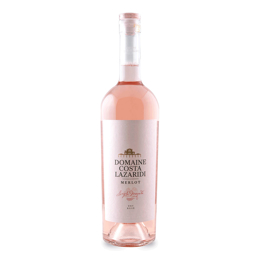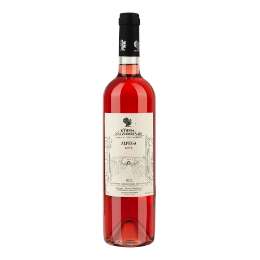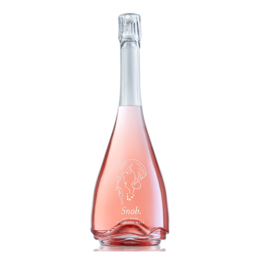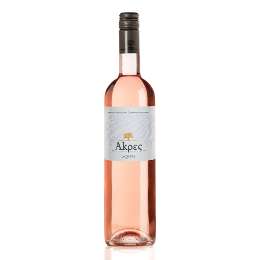Rosé Wines
Rosé Wines from Greek and International Vineyards. Rosé Wine is a passepartout. It is the ultimate wine, for all year round. Choose between Dry Rosé, Semi-Dry Rosé and Semi-Sweet Rosé, since there is wine for every occasion.
Frequently Asked Questions
01What makes rosé wines different from other options?
The elegance of rosé wine is found in just few alcoholic beverages. The pink shades in the color, along with the floral and fruity elements in aroma and taste, are the two main reasons for its uniqueness.
02What rosé wine options do you have for someone who has never tried it before?
Dryopi Estate's rosé is made exclusively from Agiorgitiko. Such a fine wine can easily serve as a starter. Of similar caliber are Little Ark and Gris de Nuit of Lantides Winery and Tselepos Estate, respectively. These are excellent rosé vinifications of a variety that is normally used for white wines: Moschofilero. Finally, Avantis Estate's Amygdalies is an exquisite Syrah, capable of turning rosé wine "enemies" into lovers.
03How would you describe taste and aroma in rosé wines?
It would not be a lie to claim that rosé wines balance between red and white ones. Their fairly intense acidity and floral elements remind of the white side. Our habit of enjoying them cool, as well as the citrus notes they often feature, are also reminiscent of the white side. But flavors and aromas of strawberry, cherry and pepper, along with their noticeable tannins, reveal the red side.
04 Is there any difference in rosé wines, depending on the region of production?
We limit ourselves to just two examples: The famous rosés of Provence, Southern France, are full of apricot, strawberry, peach and melon aromas, against a background of light minerality or light oiliness. This is expected, since the main production variety is Grenache. However, if we go to Amyntaio, Northern Greece, where Xinomavro has the first word, we will discover "harder" rosés, with more noticeable tannins and elements of forest fruits. In these wines, the mineral dimension is replaced by a botanical one.
05What is the ideal occasion to enjoy a rosé wine?
Rosé wine is considered more suitable for spring and summer situations. A picnic, a gathering of good friends on a terrace with a view, a shrimp pasta dish in a beach restaurant, an open-air cinema and many similar occasions are considered ideal for rosé wine. However, feel free to enjoy it in colder weather as well. Like all types of wine, rosé is all-season.
06How do I choose the right rosé wine for a dinner or a party?
There are not only white sparkling wines. There are also rosés. Be sure that they will leave their mark at a party. A dinner goes well with rosé wine, whether its dishes include seafood risotto, shrimp pasta, grilled salmon or tuna salads. Feel free to bring a rosé wine if you've been invited to an evening bbq and the weather is relatively warm. Also, if the dinner hosts Indian, Chinese or Thai dishes, a rosé wine will go really well.
07Are there specific rosé wines recommended for food pairings?
If you have ordered a turkey burger, you could further enjoy it with a Merlot. If your dish contains slices of cold boiled pork and Russian salad, then a bottle of Mavrodaphne will make the difference. If a proper lobster pasta dish will arrive in front of you, then the range of options is greater: Xinomavro or Grenache or Limnionas.
08How can I properly store a rosé wine to preserve its flavor?
Like all wines, rosés hate heat and sun. Radiation-free cool places are their favorite. Of course, if the bottle is opened, then keep the rest of its content in the refrigerator, for no more than three days.
09 Any suggestions on how to best serve a rosé wine?
Rosé wines are similar to white wines, in terms of serving. A temperature of 12°C is probably ideal. Always use a suitable stemmed glass to highlight the wine’s great aromas.
10Can rosé wines be used in cocktails, and if so, which are the most popular?
A popular one is the Rosé Margarita, in which crushed ice, tequila, triple sec liqueur and lime juice are combined with sparkling rosé wine. Also popular is the Rosé Mimosa, in which sparkling rosé wine and orange juice are mixed with a small dose of rose liqueur. Finally, fans of dry rosé wine will love the Cooler, in which the wine is combined with vodka, sugar syrup and lemon juice, in a ratio of 3:2:2:1. For an even better result, a small amount of blackberry syrup or purée can be added.

























